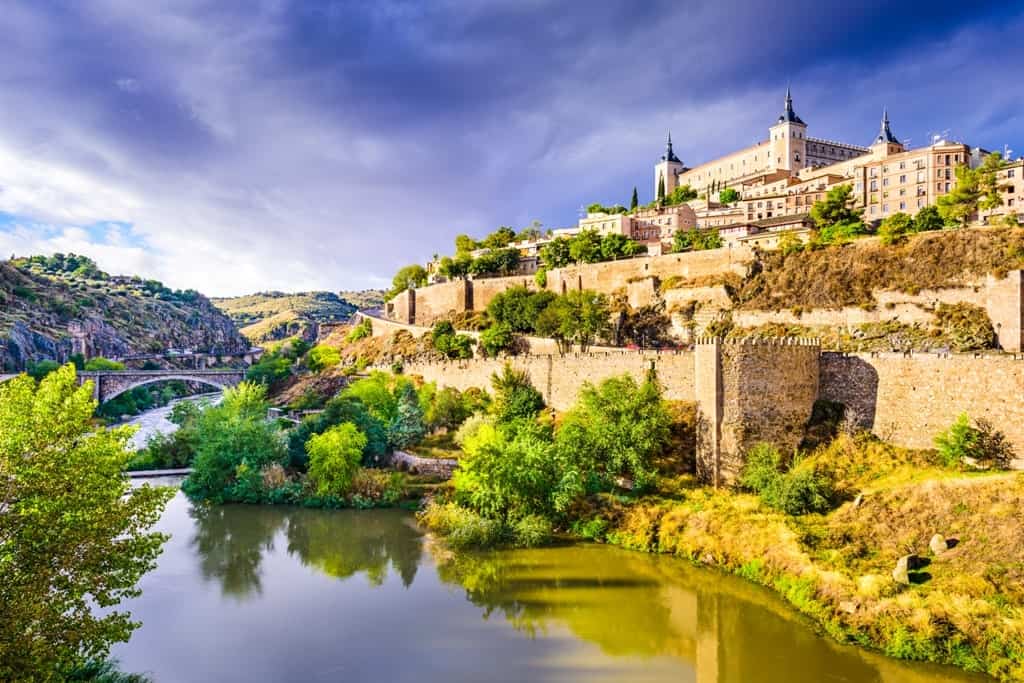Spain is rich in historic cities and towns, but international travelers often limit their visits to the most popular ones. If you want to explore some destinations out of the beaten path, you may want to get to know some historical events and some hidden facets of this Mediterranean Country by visiting some lesser-known towns, cities, or even small and picturesque villages!
Spanish walled cities are a living witness of the cultural mix stemming from the many rulers who occupied these territories throughout the centuries: Celts, Romans, Visigoths, Moors, Jews, and Catholic kings.
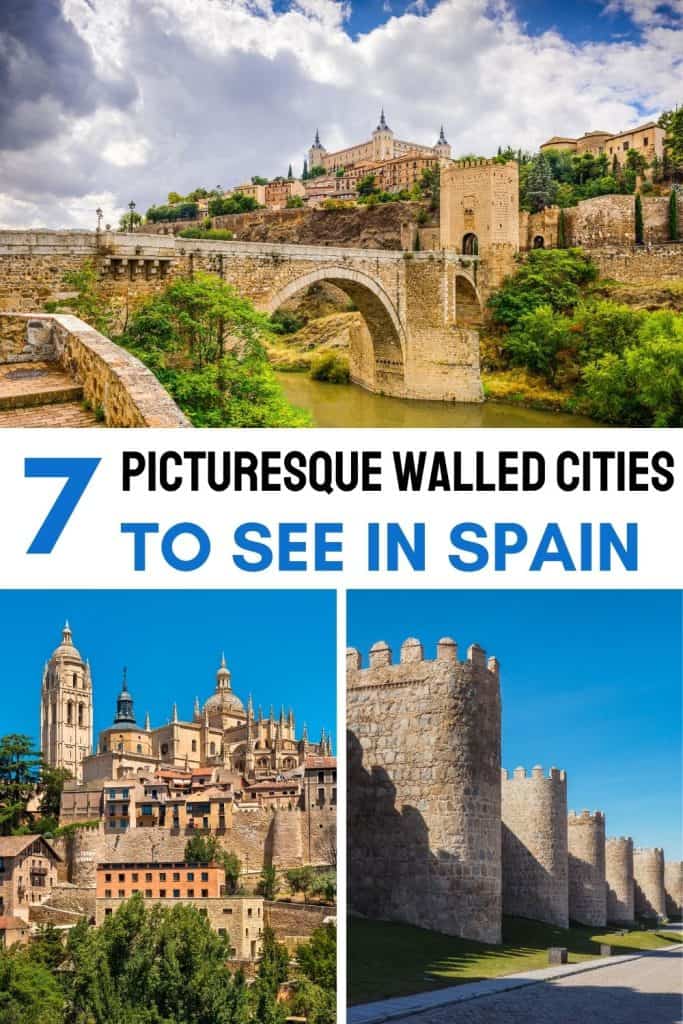
Let’s see a non-exhaustive list of the most beautiful Spanish walled cities!
Table of Contents
7 Must-See Spanish Walled Cities
Avila (Castile)
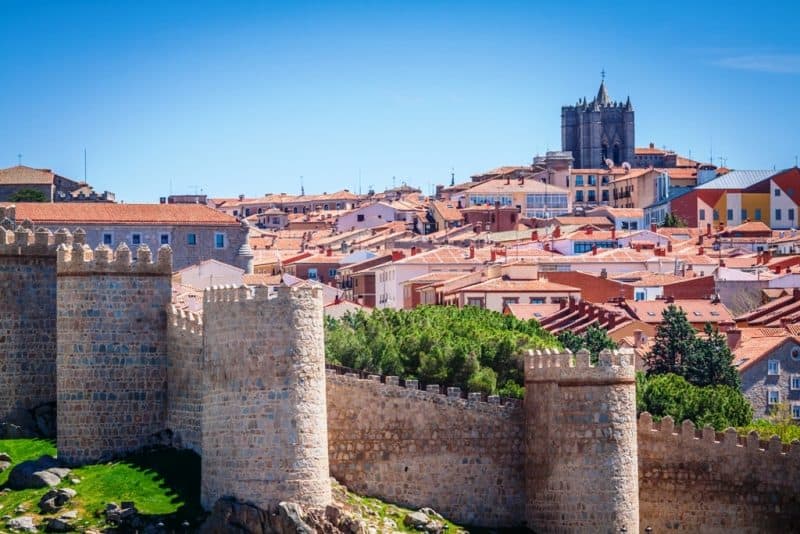
Let’s start with this city located about 100 Km north of Madrid at 1131m above sea level. It is still surrounded by its ancient crenelated walls with about 80 towers and 9 majestic gates. Avila is pretty famous for being the best-preserved Spanish walled city, and it also has so many nobiliary buildings and elegant mansion which earned it the surname of “Avila de los Caballeros” (meaning “Avila of the Gentlemen”).
Sightseeing in Avila:
- Walls: they date back to the end of the XI century, and they were built to protect the city from the Moorish invasions. At that time, tensions were increasing between the Catholic North and the Muslim South of the Country, and Avila was right on the symbolic border between these two factions.
- Church of San Pedro: one of the most beautiful Romanesque churches of Avila
- Cathedral: its apse is integrated into the city walls making this church an integral part of the defensive system of Avila.
- Monastery of Santa Teresa: it was built there in 1636, right on the remains of the birthplace of Satna Teresa.
- Old Town: rich in beautiful buildings and churches, it’s included in the UNESCO World Heritage List.
Segovia (Castile)
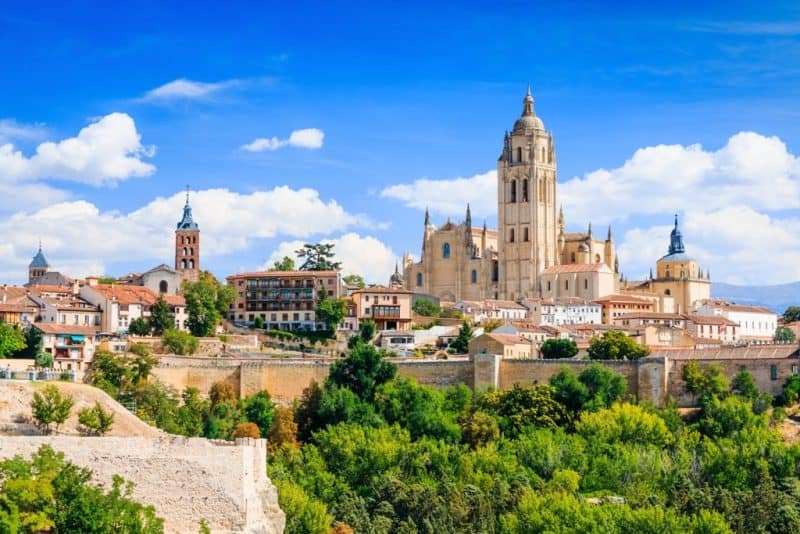
Segovia is only 60 Km away from Avila and 90 Km from Madrid. It’s mostly famous for its Roman aqueduct, but it has some great walls offering a scenic view and a real slice of local history. Its fortress and its ancient gates will make you step back in time and they’re really worth a detour when visiting Castile Region. Segovia is also one of the main stops of the Way of St. James!
Sightseeing in Segovia:
- Walls: visitors often miss the chance to walk on top of the city walls! You can climb up from the Tourist Info Point located inside the Puerta de San Andres.
- Puerta de San Andres: also named Arco del Socorro because of the Virgen del Socorro that was later added. It’s located in the Jewish Quarter of Segovia.
- Roman Aqueduct: the main landmark and attraction of Segovia
- Cathedral: a true Gothic masterpiece
- Alcazar (Fortress): another landmark and popular attraction, located upon a hill overlooking the city. It looks like a fairy castle and you can reach it walking along a nice wooden road.
Toledo (Castile)
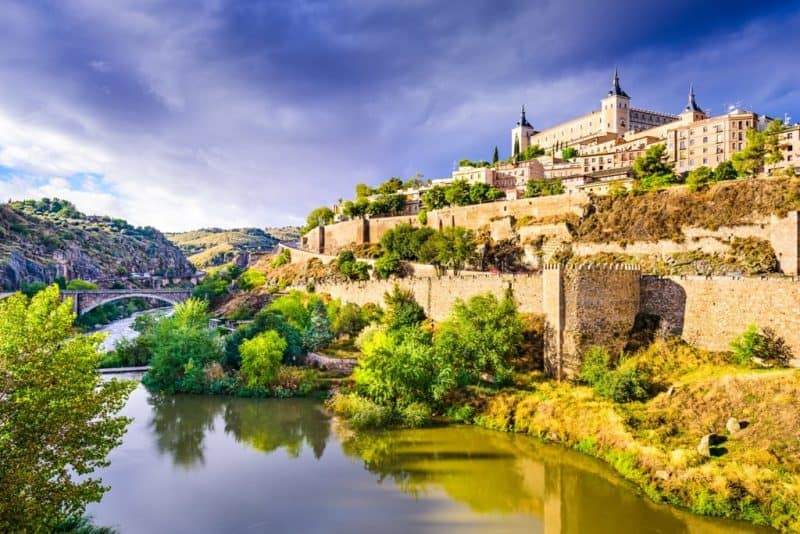
It’s the most famous Spanish walled city, other than a popular day trip destination for Madrid visitors. Toledo’s ancient Roman walls have been expanded and modified throughout the centuries reaching their current shape and size under the Visigoths. Toledo is a unique city offering its visitors the chance to see a special mix of architectural styles deriving from Christian, Islamic, and Jewish traditions.
Sightseeing in Toledo:
- Walls & Gates: the main gate is named Puerta de Bisagra, and it was built by the Moors in the X century. Another beautiful gate is named Puerta del Sol, and it’s built in Mudejar style, involving some typical Moorish and Islamic decorations.
- Alcazar (Fortress): you can visit the Army Museum inside, but not before spending a moment to watch it from the outside! It was the first square-plan Spanish castle with a tower at each corner.
- Cathedral: the main landmark of Toledo is its Gothic Cathedral, which is one of the most beautiful churches in Europe!
- Monastery of San Juan de los Reyes: it was provocatively built in the Jewish quarter by the kings to assert their power.
- Jewish Quarter: one of the most picturesque areas of the city
- Plaza Zocodover: the main medieval square of Toledo
Trujillo (Extremadura)
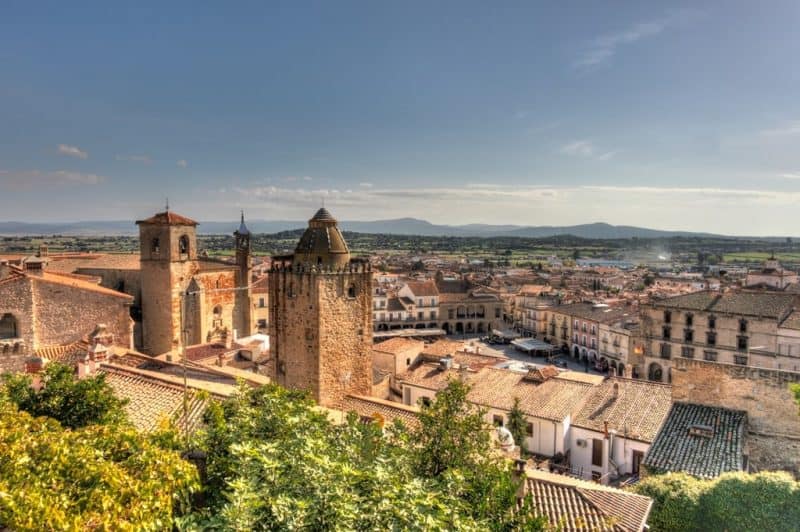
This small and picturesque town belonging to Caceres Province, in Extremadura, is an excellent destination for visitors searching for an unusual yet charming location. Its peaceful atmosphere and its elegant buildings on Plaza Mayor will let you get a glimpse of its ancient splendor. It’s also close to a beautiful natural area with forests and pastures.
Sightseeing in Trujillo:
- Castle and Walls: the castle overlooks the town from the top of a hill and it dates back to the XIII century. It was built upon the remains of the former Arab fortress.
- Plaza Mayor: the main square of the town is lined with some elegant Renaissance and Baroque budlings.
- Church of Santa Maria Mayor: a mix of architectural styles and cultural traditions
- Old Town: a romantic place for an evening stroll
- Pizarro House Museum: the house of Pizarro Family where you can learn more about the Spanish conquistadores.
Tossa de Mar (Catalonia)
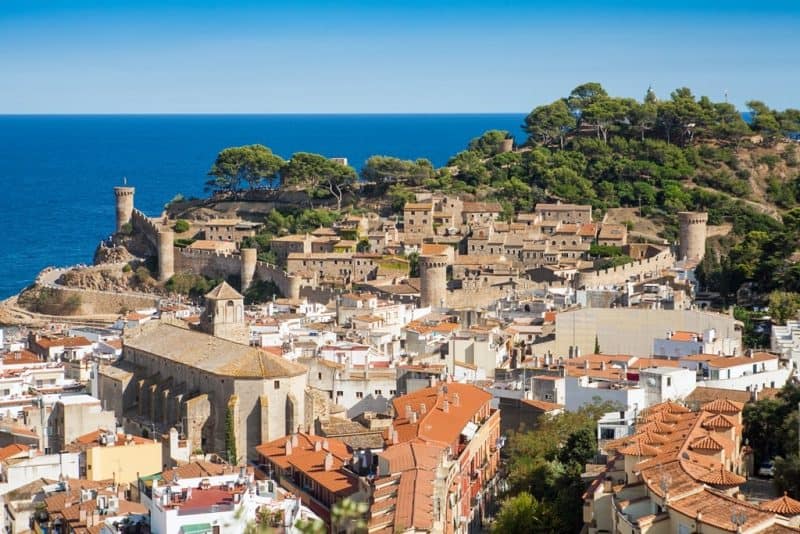
If you’re planning a beach holiday in Spain, but you’re also looking for some sightseeing, Tossa de Mar in Costa Brava is the perfect place for you! It’s a lovely medieval town perched upon a hill but close to some beautiful sandy beaches. It’s full of art and history, but also vibrant and sunny without being so touristy and chaotic like other seaside resorts nearby. Its Old Town is still enclosed by some ancient walls and its 7 towers give it a fairy look that has always impressed artists and writers throughout the centuries.
Sightseeing in Tossa de Mar:
- Old Town & Walls: a stroll along its narrow alleyways is a must. You can also walk on top of the XIII century walls at sunset to enjoy the view.
- Casa del Governador: the main museum of Tossa de Mar showcases some archeological remains and some modern and contemporary art pieces.
- Els Amettlers Roman Villa: just outside the town, an archeological park shows the remains of an ancient Roman villa
- Platja Gran: the main beach of Tossa de Mar, just below the city walls
- Sa Roqueta district: one of the first neighborhood that grew outside the city walls. It’s full of typical restaurants!
Niebla (Andalusia)
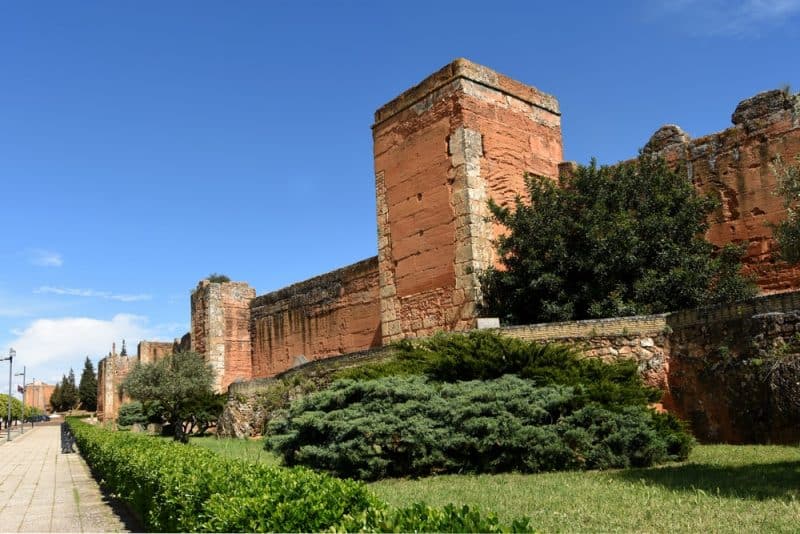
Andalusia is not only about Seville, Granada, Cordoba, and other famous historic cities! There are also some smaller and lesser-known destinations that are worth a visit! For example, Niebla is a hidden gem on the banks of the Tinto River: ancient walls, a scenic castle, and a cozy and intimate atmosphere. It’s a perfect day trip if you’re visiting Huelva, but it can be easily reached from Seville or Cadiz too! If you’re going there by car, you won’t miss it: its octagonal towers and its walls are visible from a great distance!
Sightseeing in Niebla:
- Walls: 2 Km of perfectly preserved walls enclosing the Old Town. They date back to the XII century.
- Niebla Castle: it was built in the XV century upon the remains of the former Moorish Alcazar. Its most scenic elements were preserved and you can still see the Muslim Tower of Homage for example.
- Church of Santa Maria de la Granada: it was a former Byzantine cathedral, then a mosque and then a Gothic Catholic church!
- Church of St Martin: you can still see some Christian, Visigoth, Arab and Jewish traces, all in the same place!
- Roman Bridge: still majestic and functional. It crosses the Tinto River giving access to the town.
Lugo (Galicia)
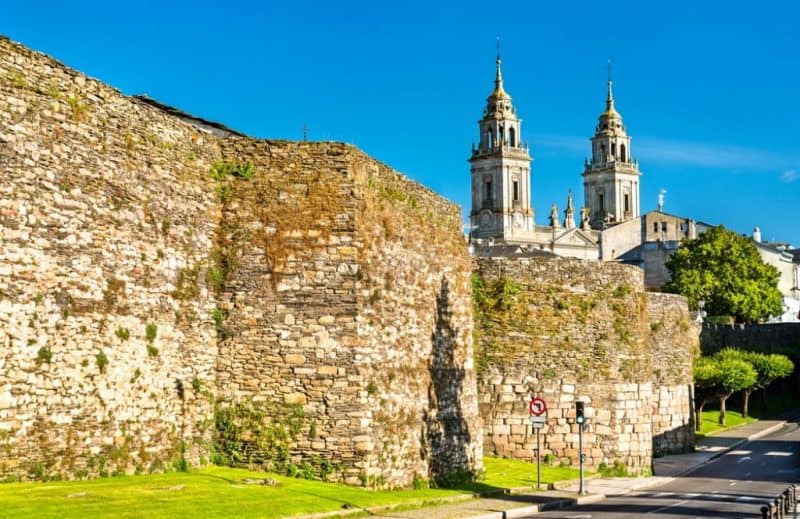
In the far north of the Country, in Galicia Region, there is a beautiful walled city that is not so popular among international visitors: it’s Lugo. It’s the only city in the world that’s still entirely enclosed by Roman walls! These ancient fortifications are 15m high and they’re still so well preserved that you can walk along them for 2 kilometers! If you love visiting walled cities, it’s definitely a destination not to be missed!
Sightseeing in Lugo:
- Walls: they date back to the III century, and they are still intact and covering 2 Km. Take a look at the Old Town from there!
- Cathedral: this beautiful Romanesque church is dedicated to the Virgin Mary and it dates back to the XII century
- Museo Provincial: you can learn more about local history inside this former monastery that was turned into a museum of local folklore
- Archeological Museum of Castro de Viladonga: just outside the city, an archeological park shows the remains of an ancient Roman settlement
- Roman Baths: they’re still located inside the modern spa of Lugo! You can still see some real rooms dating back to the Roman times on the lower floor.

